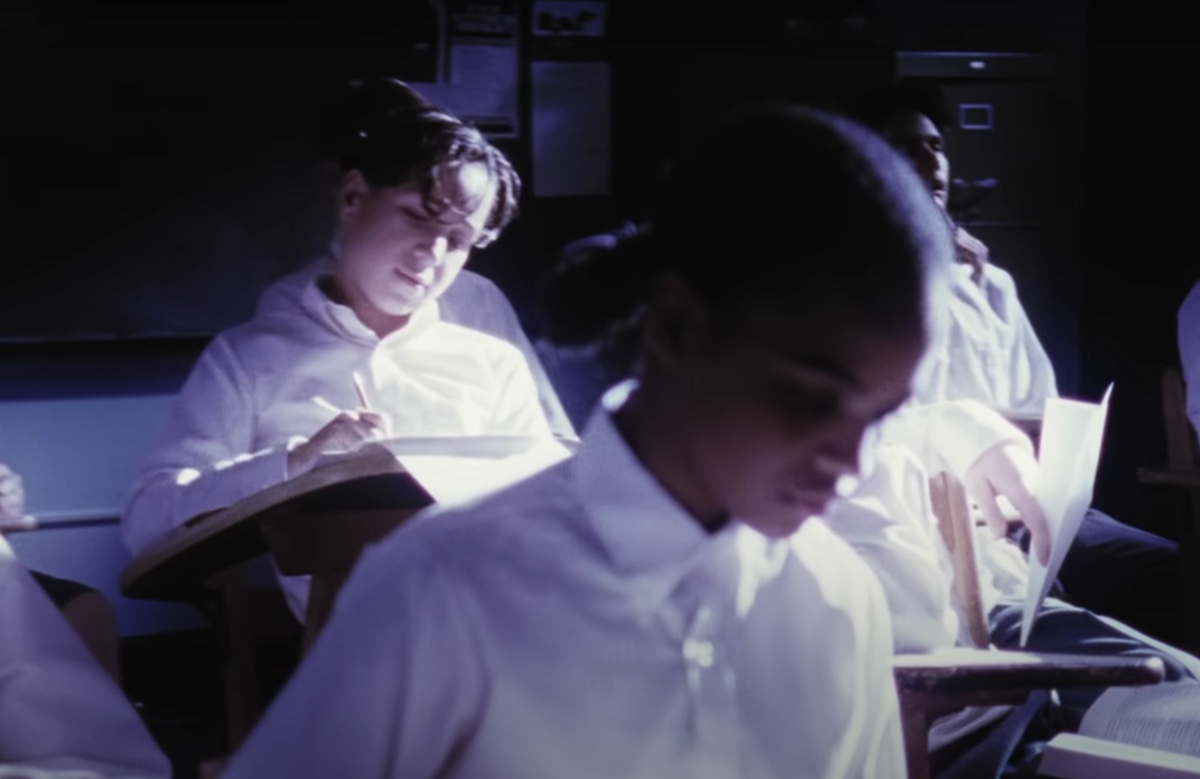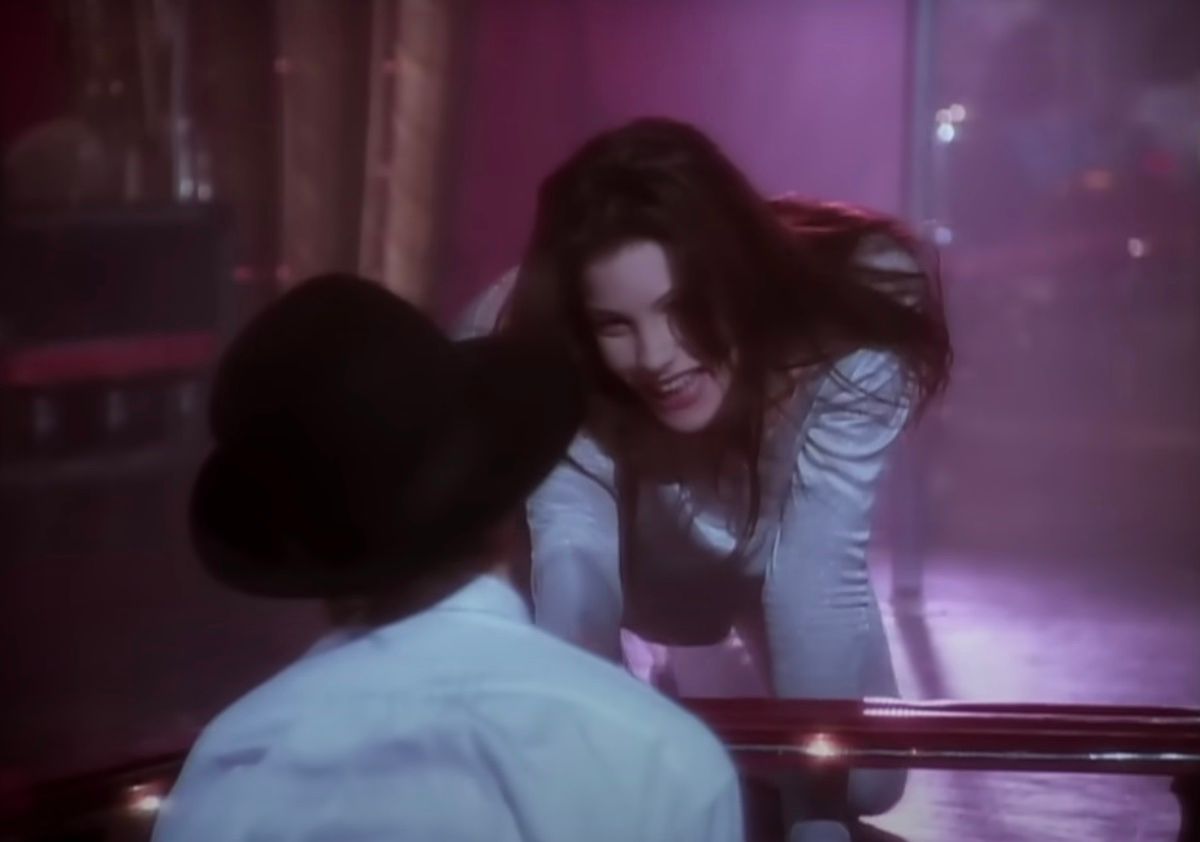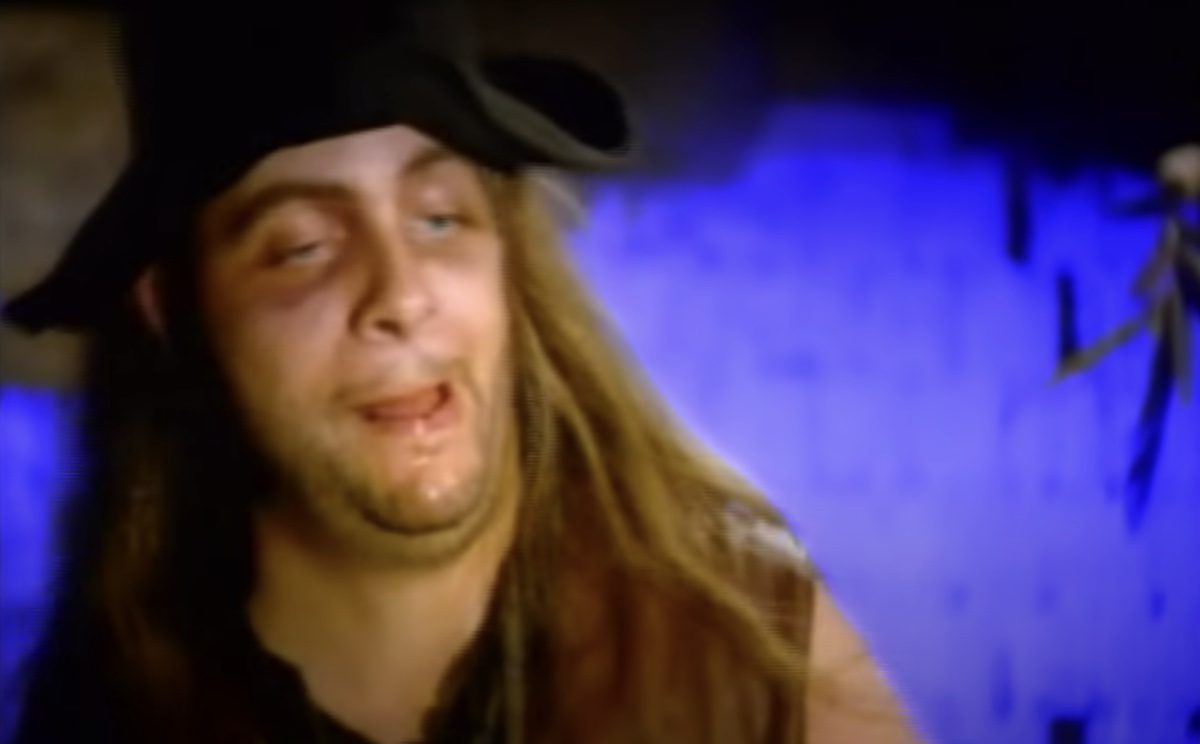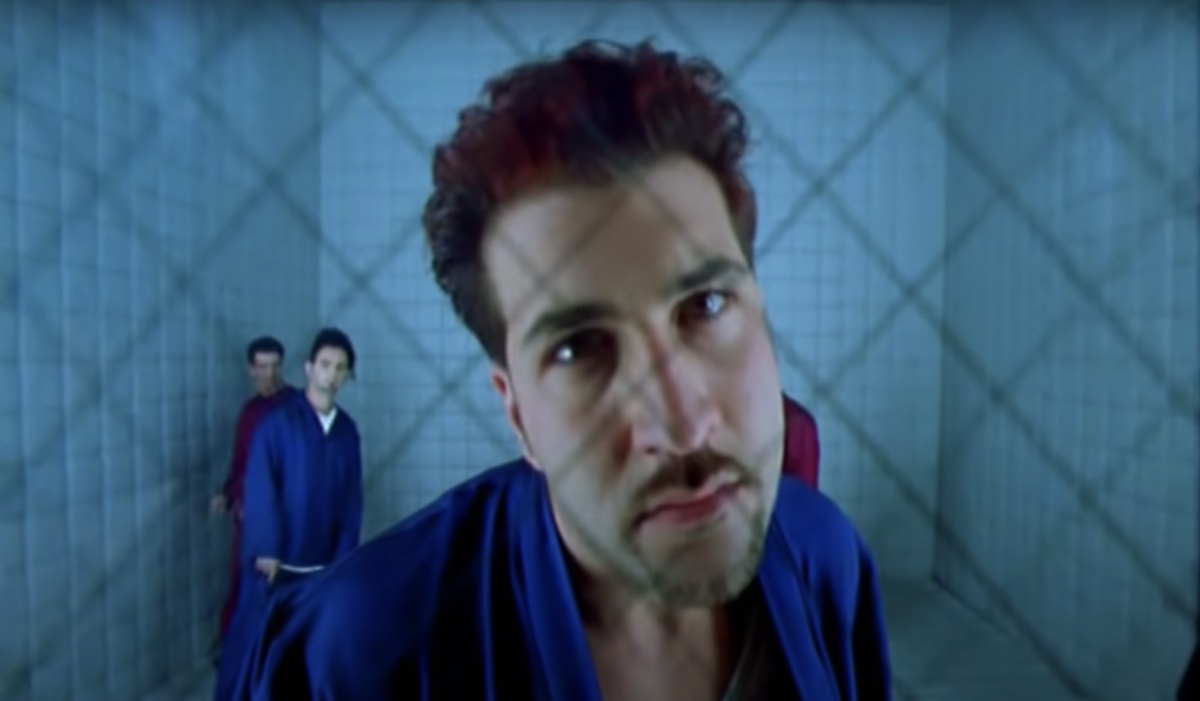6 '90s Music Videos That Are Offensive by Today's Standards
They were huge on TRL, but these videos would have a tough time making it past censors in 2023.
Music videos transformed the '80s but reached their peak in the '90s as that decade's pop stars pushed the envelope of creativity and expression with extravagant videos that cost as much as $7 million (in the case of the Michael and Janet Jackson collaboration "Scream"). Alongside expanding narrative and visual frontiers were numerous videos that pushed social boundaries, sometimes to places deemed unacceptable by much of society. Videos including Madonna's "Justify My Love" (1990), Sir Mix-a-Lot's "Baby Got Back" (1992), The Prodigy's "Smack My [Expletive] Up" (1997), and Nas' "Hate Me Now" (1999) all made headlines or were banned for content deemed controversial at the time.
But look back at the decade through today's eyes and you'll find other hits that went straight to the MTV Buzz Bin, despite violence, misogyny, and other content that today's audiences would toss elsewhere. Here are six popular music videos from the '90s that are offensive by 2023 standards.
READ THIS NEXT: 8 '90s Hit Songs That Are Offensive by Today's Standards.
1
"Jeremy" by Peal Jam (1992)

Based on the true story of a high school sophomore who died by suicide, this single from Pearl Jam's debut album Ten featured cover art of a little girl reaching for a gun. Even more shocking was its powerful music video, which culminates in the song's titular character bringing a gun into class and ending his life.
Due to MTV censoring part of the final scene, viewers see only the aftermath—his blood-spattered classmates—leading many to believe Jeremy had turned on them. While audiences were troubled by the video in 1992, amid today's constant thread of gun violence in schools, it's virtually impossible to imagine such a video being produced or airing on television.
2
"Crazy" by Aerosmith (1994)

"In 'Crazy,' two high school girls go crazy and act out a series of go-for-broke romantic/sexual fantasies," claims Aerosmith guitarist Joe Perry in Rocks: My Life in and Out of Aerosmith. But there's something about that opening scene for the video—in which 17-year-old Alicia Silverstone's Catholic schoolgirl skirt catches on the window she's sneaking out of—that makes you wonder just whose fantasies she and her partner in crime, a 16-year-old Liv Tyler, are really living out.
Soon, the two have shed the rest of their uniforms to win a pole-dancing competition and shoplift sunglasses as a lust-struck cashier looks on, marking the video as a relic of an era where female empowerment was often narrowly defined as power over the male gaze. (Oh, and one of the stars of the video is frontman Steven Tyler's actual underage daughter, casting that was creepy enough at the time, let alone in hindsight.)
For more entertainment trivia sent right to your inbox, sign up for our daily newsletter.
3
"Just a Girl" by No Doubt (1995)

At first glance, you might not notice anything problematic about the high-contrast video for the breakout No Doubt single featuring platinum-haired singer Gwen Stefani railing against the patriarchy (despite not self-identifying as feminist). And then you spot the bindi on her forehead.
The singer said she became aware of what would become a trend-setting affectation while dating bandmate Tony Kanal, whose parents were born in India. Worn primarily by women on the Indian subcontinent, the mark can be associated with a number of religious and cultural meanings, but Italian American Stefani told Rock Street Journal (via fansite Shefani Archive) in 1997 that she didn't consider it "a signature thing" for her before the video, and: "For me, it was just fashion."
The accessory is especially cringe amid increased awareness around the type of cultural appropriation that Stefani has extensively and unapologetically profited from for decades, perhaps most notably during the "Harajuku Girls" era of her solo career, when she toured with four silent Japanese backup dancers that comedian Margaret Cho once compared to a minstrel show. (When questioned by Paper about her actions in 2021, the The Voice star offered, "These rules are just dividing us more and more," and went on in 2023 to awkwardly proclaim to Allure senior editor Jesa Marie Calaor of her supposed kinship with other cultures, "My God, I'm Japanese.")
4
"Cotton Eye Joe" by Rednex (1995)

In 1994, the Swedish group Rednex decided to mix a Eurodance version of "Cotton Eye Joe," an American folk song with possible roots in slavery. As noted in a 2015 HuffPost look back, the group "made a global name for itself by fetishizing the American South." Alongside their offensive band name, the group members assumed stage names including "Mary Joe" and "Billy Ray" in place of given names like Annika and Jonas.
And for all its silliness, the 1995 video for the surprise hit is nonetheless filled with painful stereotypes of southern American poverty. Amid piles of hay and frequent shots of a scantily clad woman atop a mechanical bull, toothless band members clad in ragged clothes spew moonshine and pull rodents from their unbrushed hair.
5
"I Drive Myself Crazy" by 'N SYNC (1999)

In this 1999 clip for a pop ballad from their debut album set largely inside a padded room, the members of 'N SYNC manage to both trivialize mental illness and embody the most fragile of male egos. Through a series of flashbacks, we see each involved in tragic interactions with their onscreen girlfriends: One woman gets annoyed about Chris Kirkpatrick answering his phone during a picnic date, another dislikes a necklace gifted by Justin Timberlake, etc. These situations cause the singers to "go crazy." By the end of the video, during which a sexy psychiatrist inexplicably straddles Joey Fatone as he races around in a Superman costume, the mean women get what they deserve as the boy band is released from the asylum and their angry ex-girlfriends arrive in straight jackets to take their places.
6
"The Bad Touch" by Bloodhound Gang (1999)

A September 1999 release from an album titled Hooray for Boobies, "The Bad Touch" features members of the Bloodhound Gang walking around Paris in monkey onesies and large, fake human ears. Early in their toxic travels, they shoot four passing women with tranquilizer darts and throw one over a shoulder to the tune of "put your hands down my pants and I'll bet you'll feel nuts." Later, they knock out a gay couple with baguettes, trap a person of short stature under a net, and put them all in a cage with the women.
The Gay and Lesbian Alliance Against Defamation spoke out against the video's "gay-bashing," but after a small edit, MTV deferred to viewers' requests and put it in frequent rotation.






















